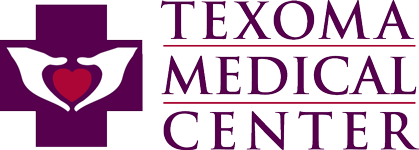'Time is Brain Cells'
July 19, 2021
Stroke is a medical emergency in which blood supply to the brain is interrupted, causing damage to brain cells. The most common type is an ischemic stroke, when a blockage reduces the flow of oxygen in an artery that supplies blood to the brain. A hemorrhagic stroke occurs when a rupture in a cerebral blood vessel causes blood to accumulate and compress the brain tissue around it, which can cause brain damage. In either case, brain cells begin to die in just minutes.
blood supply to the brain is interrupted, causing damage to brain cells. The most common type is an ischemic stroke, when a blockage reduces the flow of oxygen in an artery that supplies blood to the brain. A hemorrhagic stroke occurs when a rupture in a cerebral blood vessel causes blood to accumulate and compress the brain tissue around it, which can cause brain damage. In either case, brain cells begin to die in just minutes.
Abdul Baker, MD, FAANS, a neurosurgeon at Texoma Medical Center, says that when it comes to stroke care, it is best to understand the risk factors and warning signs and to take preventive measures to reduce the likelihood of stroke occurring in the first place.
Risk Factors
Risk factors are categorized as modifiable or non-modifiable. Non-modifiable risk factors are unchangeable conditions, such as age and family and genetic history. People at risk due to non-modifiable risk factors need to take extra measures to stay healthy. Modifiable risk factors, like diabetes, high blood pressure, high cholesterol, obesity and smoking, can be changed to decrease the likelihood of suffering a stroke. Dr. Baker advises managing these conditions through lifestyle changes before turning to medication or other options.
“Modify your diet if you’re overweight or have high cholesterol. If you have high blood pressure or diabetes, try stress-reducing techniques, exercise regularly and quit smoking if you are a smoker,” explains Dr. Baker. “Improving your health in these areas will not only reduce your risk of stroke, but also help with diabetes, hypertension and obesity.”
The warning signs of stroke include any change in the ability to speak or understand speech, inability to move limbs, lack of feeling in a limb and facial asymmetry. A person experiencing any of these symptoms should immediately seek medical care. “The most effective aspect of stroke treatment is timely intervention,” stresses Dr. Baker. “To put it simply, time is brain cells.”
Treatment Options
The least invasive treatment option for stroke is medication, such as tissue plasminogen activator (TPA), and antiplatelet drugs. For more severe strokes, invasive procedures like mechanical thrombectomy, carotid stenting and carotid endarterectomy are available. “In the most extreme cases, brain surgery may be necessary,” says Dr. Baker. “This involves removing a section of the skull to allow the part of the brain that was involved in stroke to swell outward, preventing further brain damage that would have occurred by undue force of the swollen brain over other parts of the brain within the skull.”
Stroke treatment at Texoma Medical Center is performed by a multidisciplinary group, including cardiovascular surgeons, neurosurgeons, interventional neurologists, stroke physicians and a coordinator. “Texoma Medical Center is staffed and equipped to handle all aspects of stroke,” says Dr. Baker. “We are on our way to becoming a comprehensive stroke center, which is the highest-level designation a hospital can receive for stroke care. We have most, if not all, of the elements in place to meet that designation."
